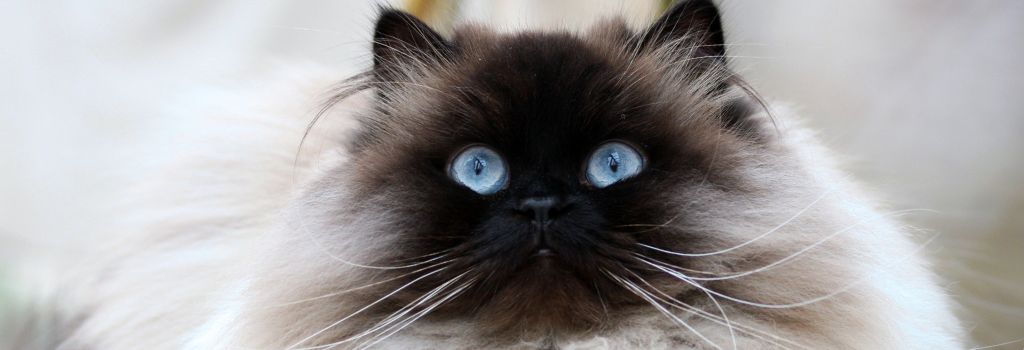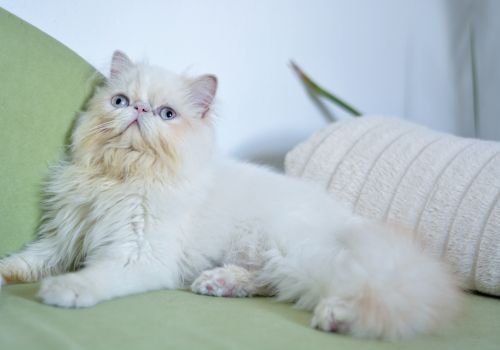If you're reading this, it's probably because you've been charmed by those incredibly photogenic Himalayans (affectionately known as "Himmys"), or maybe you're considering adding one to your family. Either way, you're in for a treat because today we're diving deep into what makes Himalayans so irresistibly adorable and unique.
What Makes a Himmy a Himmy?
First things first, what does a Himalayan bring to your home? Well, let's talk about their enchanting personalities. These adorable fluff balls are brimming with life and love! They're incredibly social, making them great pals for children and other pets. So, if you're looking for a companion who's more like a best friend, look no further. Himmys love to play and are generally just lovable balls of fur that will make your heart melt.
But Wait, There's More!
Sure, they're cute and loving, but there's no such thing as a perfect pet, right? Himalayans come with their own quirks and requirements. Their luscious, long coats are a sight to behold, but they also need regular grooming to keep them looking their best. Also, these beautiful kitties are best suited for indoor living, especially if you're in a hot climate—they don't do well in the heat.
Is It All Worth It?
In a word—absolutely! These cats are brimming with personality and overflowing with love. What more could you ask for? Himalayans are calm, sweet-natured felines that live for your attention and affection.
A Peek Into Their Past
Now, let's take a little stroll down memory lane. Himalayans are a marvelous creation of both science and artistry. Back in the 1930s, a scientist and a cat breeder joined forces to combine the luxurious coat of the Persian with the stunning eyes and vibrant personality of the Siamese. The result? A kitty so gorgeous and distinctive, it was named after the majestic animals found in the Himalayan Mountains.

Pop Culture's Furry Star
These lovable fur babies aren't just stars in your living room; they've made their way into movies, TV shows, and magazines. And it's no surprise why! With their playful and sociable nature, they're not the type of cats that prefer solitary confinement. Himalayans love being around their humans, making them the perfect companions for those who love to give (and receive) endless amounts of love and attention.
Genetic Predispositions for Himalayans
When Kitty Goes Rogue: Unpacking FLUTD
Feline lower urinary tract disease. FLUTD is actually a blanket term for a variety of conditions that can affect your cat's lower urinary tract. Whether it's bladder stones (urolithiasis), urinary tract infections, or blockages often seen in male cats, the symptoms can look alarmingly similar. Keep an eye out for any signs of abnormal urination, like opting for cool surfaces like tile floors or bathtubs, blood in the urine, or distressed cries while in the litter box. Trust us, if you notice any of these signs, you'll want to call your vet pronto, especially if your cat is male. Blockages can turn into emergencies within hours, causing unbearable pain and even being fatal if not treated immediately.
It's tricky because cats are pros at hiding their discomfort. Regular urinalysis tests are your best friend in catching FLUTD early. With timely medications and specialized diets, most cases can be managed, although severe instances might require surgical intervention.
The Lifesaving Role of Blood Types in Cats
If the unthinkable happens and your kitty ends up in a life-or-death situation, blood transfusions can literally be lifesavers. But did you know that just like humans, cats also have different blood types? While most domestic cats rock the Type A, purebreds like your Himalayan could have Type B, or very rarely, Type AB blood.
Knowing your feline's blood type in advance can make a huge difference during emergencies, as mismatched blood can lead to serious complications. Blood typing can often be included in your regular vet check-ups and added to your pet's microchip record for quick reference. So, if you haven't done it yet, now might be the right time to get your cat's blood typed!
Neonatal Isoerythrolysis: A Silent Killer Among Newborn Kittens
Neonatal Isoerythrolysis (NI), also known as Hemolytic Icterus. This rare but deadly condition occurs when a newborn kitten with one blood type nurses from a mother with a different blood type. The colostrum (the first milk) from the mother contains antibodies that wreak havoc on the kitten’s red blood cells. Unfortunately, kittens affected by NI often don't survive more than a few days after birth.
While NI can occur in various breeds, it's more prevalent in those with a higher likelihood of having Type B blood—like Himalayans. If you're planning on breeding your Himalayan cat, it's crucial to discuss this with your vet to understand the risks and preventive measures.
The Sneaky Health Issue: Portosystemic Shunt in Cats
Imagine a scenario where the blood that should be nourishing your kitty's liver takes a detour and bypasses it. Yeah, not so good for the liver! This disorder leads to an underdeveloped liver that can't adequately remove toxins from the blood. These toxins, including ammonia and bile acids, can cause havoc—think neurological issues in severe cases. Plus, these kitties are super sensitive to drugs and anesthesia because their livers aren’t up to the detox task. If your vet suspects this condition, a blood test or liver ultrasound is typically the next step. Surgery can often correct the blood flow issue, giving your feline friend a fighting chance.
Stretch, But Don’t Tear: Cutaneous Asthenia (Ehlers-Danlos)
Ever heard of a genetic issue that makes skin super stretchy? Welcome to the world of Cutaneous Asthenia, also known as Ehlers-Danlos syndrome. This rare condition is all about abnormal collagen and connective tissue. The problem? Connective tissues are the "glue" that holds the body together, so faulty glue means loose joints and skin that tears at the slightest touch. There are also issues with eyes, veins, and even heart valves. Severely affected kittens usually don't make it past adolescence, while mildly affected ones can live a fairly normal life. One thing's for sure—these kitties should never be bred.

The Hernia You Didn't Know About: Peritoneopericardial Diaphragmatic Hernia (PPDH)
Up next is a real tongue-twister: Peritoneopericardial Diaphragmatic Hernia, or PPDH for short. This rare condition is basically a birth defect in the diaphragm that can lead to some serious complications. Because of the malformation, organs that should stay in the abdomen might find their way into the chest cavity. The symptoms can be pretty alarming, such as sudden vomiting or difficulty breathing. If your vet confirms PPDH through diagnostic tests, surgery is usually needed. And because this condition is inherited, it’s advised that affected cats and their relatives aren’t used for breeding.
Turbo-Charged Thyroids: Hyperthyroidism in Senior Cats
Ever noticed your middle-aged cat suddenly acting like a kitten on a sugar rush? If so, it might be time for a chat about hyperthyroidism. This condition occurs when a benign tumor in the thyroid gland goes rogue, producing excessive amounts of the hormone thyroxine. This speeds up metabolism, making your kitty super active but also leading to vomiting, weight loss, and increased thirst. Worst-case scenario? Heart failure and kidney failure can result. The good news is a simple blood test can diagnose it, and modern treatments can effectively manage the condition.
More than Just Kidney Stones: Polycystic Kidney Disease
You’ve probably heard of kidney stones, but what about Pyruvate Kinase Deficiency (PKD)? This inherited condition, often seen in Persian and Himalayan breeds, involves tiny cysts in the kidneys that grow over time, leading to organ failure. Usually noticeable around seven years of age, symptoms include weight loss, vomiting, and excessive thirst. While there’s no cure, early diagnosis and special diets can help manage the symptoms. Responsible breeders recommend avoiding breeding cats with PKD, and an ultrasound or genetic test can confirm the diagnosis.
When Every Breath Counts: Feline Asthma
Last but not least, let’s talk about feline asthma, a condition that can make breathing a real struggle for your cat. Certain breeds, including Himalayans, are particularly susceptible. Unlike humans, where a cough is usually benign, a cough in cats is often a red flag. So if you notice your cat wheezing or struggling to breathe, it’s time to get it checked out. Treatment typically includes inhalers and medications to open up those tiny airways. Immediate attention is a must for any signs of respiratory distress.
If you have questions and you'd like to reach out to us, you can call us directly at (775) 383 6154, or you can email us at [email protected]. Don't forget to follow us on social media Facebook, Instagram.

